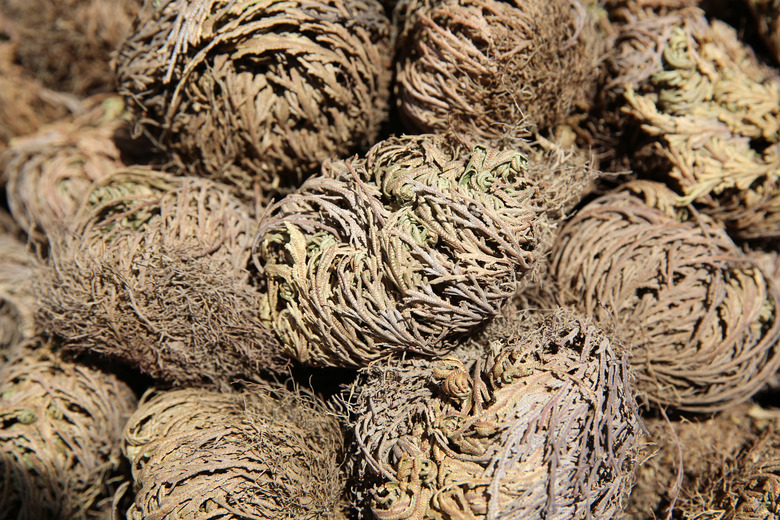How To Take Care Of A Rose Of Jericho
We may receive a commission on purchases made from links.
Anastatica, also known as Rose of Jericho (Anastatica hierochuntica), is native to the middle East and North Africa, and it's the only species of the genus Anastatica in the mustard family.
Although this annual plant looks like it would be difficult to take care of, the Jericho plant requires little care apart from light watering. But will look better and suffer fewer problems if you give it some care throughout the year.
Rose of Jericho Water Needs
Rose of Jericho Water Needs
Rose of Jericho earned the common name "resurrection plant" for its ability to revive after extreme desiccation. The Jericho plant's prolonged dryness causes it to roll up and alters its delicate appearance, robbing it of color and fullness. Keep rose of Jericho lightly moist at all times to preserve its appearance.
Saturate the soil until the excess water dribbles from the bottom of the pot or until the surrounding soil feels moist in the top 6 to 12 inches. Decrease water slightly during the autumn and winter, letting the surface dry out slightly between waterings. The chlorine and fluoride that's in most tap water can damage sensitive plants, such as the rose of Jericho, so let the water sit overnight before use so they can dissipate.
Rose of Jericho Fertilizer Requirements
Rose of Jericho Fertilizer Requirements
Excess fertilizer can harm a rose of Jericho plant, which will perform well without any supplemental fertilizer. It's best to fertilize only if it shows signs of nutrient deficiencies such as yellowing or stunted, slow growth.
Use a general-purpose fertilizer with an N-P-K analysis of 10-10-10 or 20-20-20. Dilute 10-10-10 fertilizer at a rate 1/2 teaspoon for each 1 gallon of water and 20-20-20 at 1/4 teaspoon per gallon. Water with the solution every week from the middle of spring until late summer, applying it to previously moistened soil to prevent root burn. Stop fertilizing immediately if the foliage develops crisp edges or if the plant takes on a limp, scraggly appearance.
Pruning and Grooming
Pruning and Grooming
Rose of Jericho has a naturally tidy, 6- to 12-inch growth habit, so pruning to control its size or shape is seldom necessary. But an established plant often requires light pruning or grooming to remove dead or dried out fronds. Standard pruning shears are too large to safely navigate between the densely packed, delicate fronds of rose of Jericho plants, so use fine-tipped scissors.
Wipe the scissors in isopropyl alcohol before using them to ward off the transmission of bacteria and fungi. Snip off the unwanted growth at the base, taking care not to nick or sever the surrounding foliage, and discard it.
Problems for Rose of Jericho
Problems for Rose of Jericho
Very few serious problems affect rose of Jericho. The most common source of problems is the occasional hungry slug or snail. Slugs and snails occasionally feast on rose of Jericho, but seldom in great enough numbers to cause life-threatening damage. Remove the pests by hand or install a barrier of copper tape around the plants to discourage them rather than using potentially damaging chemical deterrents or pesticides.
